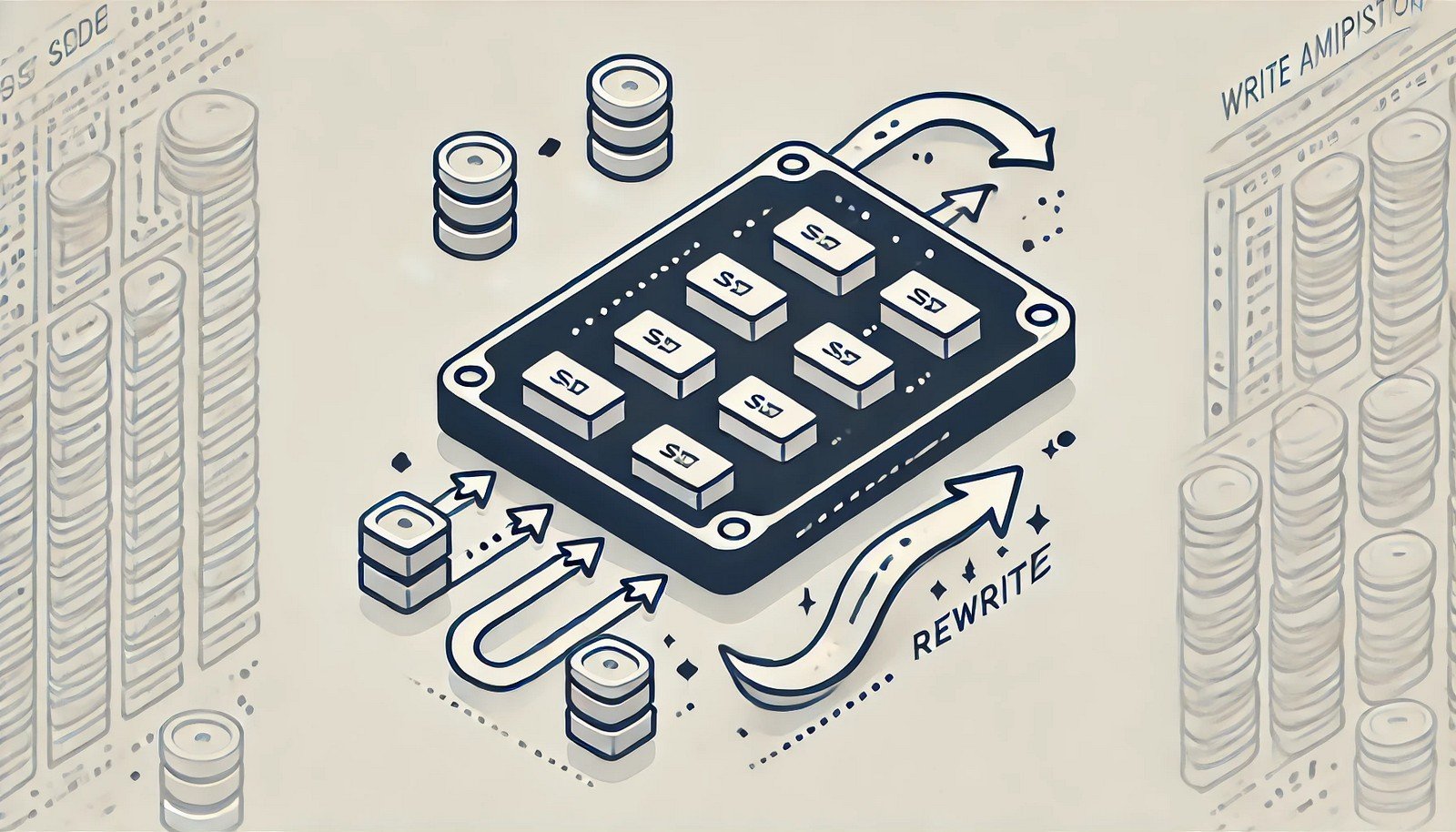Write Amplification
 (Representational Image | Source: Dall-E)
(Representational Image | Source: Dall-E)
Quick Navigation:
- Write Amplification Definition
- Write Amplification Explained Easy
- Write Amplification Origin
- Write Amplification Etymology
- Write Amplification Usage Trends
- Write Amplification Usage
- Write Amplification Examples in Context
- Write Amplification FAQ
- Write Amplification Related Words
Write Amplification Definition
Write Amplification (WA) is a phenomenon in computer storage systems, particularly in flash-based SSDs, where the actual amount of data written to the storage media is greater than the amount of data initially intended to be written. This occurs due to internal processes like garbage collection, wear leveling, and data reorganization, which cause the storage device to write more data than requested. A high WA negatively impacts SSD lifespan and performance by increasing write cycles and reducing available storage capacity.
Write Amplification Explained Easy
Imagine you’re using a notebook and want to erase a single word, but instead of just erasing that word, you have to erase the entire page and rewrite everything. That’s what happens in SSDs—when you write a small piece of data, sometimes the system has to move and rewrite much more than necessary. This extra work makes the SSD wear out faster, just like if you kept erasing and rewriting pages in your notebook over and over.
Write Amplification Origin
The concept of write amplification emerged with the advent of NAND flash storage. Unlike traditional hard drives, flash memory requires data to be written in large blocks rather than individual bytes. This limitation led to excessive data writes when making modifications, leading to the discovery and study of WA in SSD performance research.
Write Amplification Etymology
The term "write amplification" is derived from the idea that the write process is "amplified" by requiring more data to be written than originally requested. The term became widely used in SSD engineering and storage optimization research.
Write Amplification Usage Trends
With the widespread adoption of SSDs in consumer and enterprise applications, write amplification has become a major focus for hardware manufacturers and software developers. Techniques like TRIM, over-provisioning, and advanced garbage collection algorithms help mitigate WA and extend SSD lifespan. As SSD adoption continues to grow in data centers and high-performance computing, reducing WA remains a top priority in storage technology advancements.
Write Amplification Usage
- Formal/Technical Tagging:
- Flash Storage
- SSD Firmware Optimization
- NAND Memory Management - Typical Collocations:
- "write amplification factor"
- "reducing write amplification"
- "high write amplification impact"
- "SSD endurance and write amplification"
Write Amplification Examples in Context
- SSD manufacturers develop wear-leveling algorithms to minimize write amplification and extend drive lifespan.
- High write amplification negatively affects performance by increasing the number of unnecessary write cycles.
- Data centers implement over-provisioning techniques to reduce write amplification in high-usage storage systems.
Write Amplification FAQ
- What is write amplification?
Write amplification refers to the increased amount of data written to an SSD compared to the actual data input, caused by internal processes like garbage collection and wear leveling. - Why does write amplification happen?
It occurs due to the nature of flash storage, where modifying small amounts of data often requires rewriting entire blocks. - How does write amplification impact SSD lifespan?
Higher write amplification leads to more write cycles, wearing out NAND flash cells faster and reducing the drive's durability. - Can write amplification be reduced?
Yes, through techniques like TRIM, wear leveling, over-provisioning, and efficient SSD controller algorithms. - What is a good write amplification factor (WAF)?
A lower WAF (close to 1) is ideal, meaning there is minimal extra writing beyond the intended data.
Write Amplification Related Words
- Categories/Topics:
- Solid-State Drives
- NAND Flash Storage
- Data Storage Optimization
Did you know?
Some high-end enterprise SSDs are designed with custom firmware to manage write amplification efficiently, achieving significantly longer lifespans than consumer-grade SSDs. Google's cloud storage and AWS data centers use specialized SSDs optimized for minimal WA, ensuring maximum endurance for their massive-scale storage operations.
PicDictionary.com is an online dictionary in pictures. If you have questions or suggestions, please reach out to us on WhatsApp or Twitter.Authors | Arjun Vishnu | @ArjunAndVishnu

I am Vishnu. I like AI, Linux, Single Board Computers, and Cloud Computing. I create the web & video content, and I also write for popular websites.
My younger brother, Arjun handles image & video editing. Together, we run a YouTube Channel that's focused on reviewing gadgets and explaining technology.



Comments powered by CComment